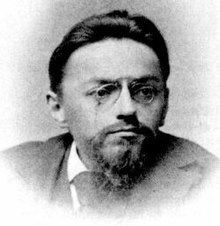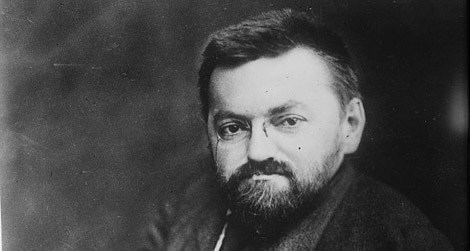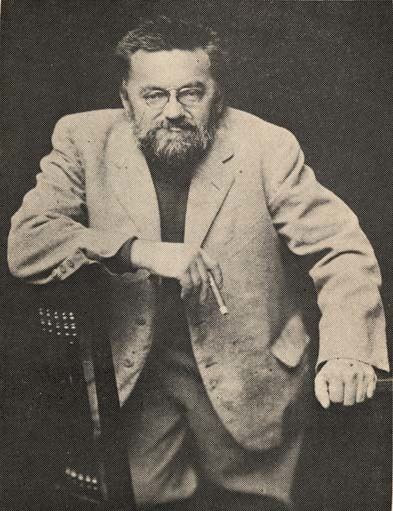Name Charles Steinmetz | Education University of Wroclaw | |
 | ||
Full Name Karl August Rudolph Steinmetz Known for Alternating currentElectric power industryHysteresisSteinmetz equivalent circuitMechanicville Hydroelectric PlantMetal-halide lampNetwork synthesis filtersPassive analogue filter developmentPhasor measurement unitSteinmetz solidTransmission lineWireless powerEngineering education Parent(s) Karl Heinrich SteinmetzCaroline Neubert Books Elementary Lectures on Electri, Four lectures on relativity, Theory & Calculation of Electric, General lectures on electrical, Theory and Calculation of Alterna | ||
Charles proteus steinmetz the man who made lightning undated
Charles Proteus Steinmetz (April 9, 1865 – October 26, 1923; birth-name: Karl August Rudolph Steinmetz) was a German-born American mathematician and electrical engineer and professor at Union College. He fostered the development of alternating current that made possible the expansion of the electric power industry in the United States, formulating mathematical theories for engineers. He made ground-breaking discoveries in the understanding of hysteresis that enabled engineers to design better electromagnetic apparatus equipment including especially electric motors for use in industry.
Contents
- Charles proteus steinmetz the man who made lightning undated
- Divine discontent charles proteus steinmetz extended roundtable
- Early life
- Socialism and technocracy
- Engineering wizard
- AC hysteresis theory
- AC steady state circuit theory
- AC transient theory
- Professional life
- Personal life
- Legacy
- In popular culture
- References

Divine discontent charles proteus steinmetz extended roundtable
Early life

Steinmetz was born Karl August Rudolph Steinmetz on April 9, 1865 in Breslau, Province of Silesia, Prussia (now Wrocław, Poland) the son of Caroline (Neubert) and Karl Heinrich Steinmetz. He was baptized a Lutheran, the religion his family "nominally" belonged to. Steinmetz suffered from dwarfism, hunchback, and hip dysplasia, as did his father and grandfather. Steinmetz attended Johannes Gymnasium and astonished his teachers with his proficiency in mathematics and physics.

Following the Gymnasium, Steinmetz went on to the University of Breslau to begin work on his undergraduate degree in 1883. He was on the verge of finishing his doctorate in 1888 when he came under investigation by the German police for activities on behalf of a socialist university group and articles he had written for a local socialist newspaper.
Socialism and technocracy

As socialist meetings and press had been banned in Germany, Steinmetz fled to Zürich in 1888 to escape possible arrest. Faced with an expiring visa, he emigrated to the United States in 1889. He changed his first name to "Charles" in order to sound more American, and chose the middle name "Proteus" after a childhood epithet given to him by classmates. Proteus was a wise hunchbacked character from the Odyssey who knew many secrets, and Steinmetz felt the name suited him.
Cornell University Professor Ronald R. Kline, the author of Steinmetz: Engineer and Socialist, contended that other factors were more directly involved in Steinmetz's decision to leave his homeland, such as the fact that he was in arrears with his tuition at the University of Breslau and that life at home with his father, stepmother, and their daughters was full of tension.
Despite his earlier efforts and interest in socialism, by 1922 Steinmetz concluded that socialism would never work in the United States, because the country lacked a "powerful, centralized government of competent men, remaining continuously in office", and because "only a small percentage of Americans accept this viewpoint today".
A member of the original Technical Alliance, which also included Thorstein Veblen and Leland Olds, Steinmetz had great faith in the ability of machines to eliminate human toil and create abundance for all. He put it this way: "Some day we make the good things of life for everybody".
Engineering wizard
Steinmetz is known for his contribution in three major fields of alternating current (AC) systems theory: hysteresis, steady-state analysis, and transients.
AC hysteresis theory
Shortly after arriving in the United States, Steinmetz went to work for Rudolf Eickemeyer in Yonkers, New York, and published in the field of magnetic hysteresis, which gave him worldwide professional recognition. Eickemeyer's firm developed transformers for use in the transmission of electrical power among many other mechanical and electrical devices. In 1893 Eickemeyer's company, along with all of its patents and designs, was bought by the newly formed General Electric Company, where he quickly became known as the engineering wizard in GE's engineering community.
AC steady state circuit theory
Steinmetz's work revolutionized AC circuit theory and analysis, which had been carried out using complicated, time-consuming calculus-based methods. In the groundbreaking paper, "Complex Quantities and Their Use in Electrical Engineering", presented at a July 1893 meeting published in the American Institute of Electrical Engineers (AIEE), Steinmetz simplified these complicated methods to "a simple problem of algebra". He systematized the use of complex number phasor representation in electrical engineering education texts, whereby the lower-case letter "j" is used to designate the 90-degree rotation operator in AC system analysis. His seminal books and many other AIEE papers "taught a whole generation of engineers how to deal with AC phenomena".
AC transient theory
Steinmetz also made greater strides to the understanding of lightning phenomena. He undertook a systematic study of it, resulting in experiments with "man-made lightning" in the laboratory; this work was published. Steinmetz was called the "forger of thunderbolts", being the first to create artificial lightning in his football field-sized laboratory and high towers built at General Electric, using 120,000 volt generators. He erected a lightning tower to attract natural lightning, and studied the patterns and effects of lightning resulting in several theories and ideas.
Professional life
Steinmetz acted in the following professional capacities:
He was granted an honorary degree from Harvard University in 1901 and a doctorate from Union College in 1903.
Steinmetz wrote 13 books and 60 articles, not all about engineering. He was a member and adviser to the fraternity Phi Gamma Delta at Union College, whose chapter house there was one of the first electrified houses ever.
While serving as president of the Schenectady Board of Education, Steinmetz introduced reforms including extended school hours, school meals, school nurses, special classes for the children of immigrants, and the distribution of free textbooks.
Personal life
Although Steinmetz loved children and family life, he knew that both his father and grandfather suffered from the same spine deformity that afflicted him. Therefore, he did not marry, for fear of passing on his deformity to any descendants.
When Joseph LeRoy Hayden, a loyal and hardworking lab assistant, announced that he would marry and look for his own living quarters, Steinmetz made an unusual proposal regarding living arrangements. He proposed that Hayden's new wife and prospective family move into a large house Steinmetz had already built with its own research lab, greenhouse, and office. He carefully courted Hayden and his wife Corinne, before broaching his proposal. Hayden favored the idea, but his wife was very wary of this unorthodox setup. She finally agreed after Steinmetz acceded to her conditions, notably that she could "run the house as I see fit".
After an uneasy start, the arrangement worked well for all parties, especially after the Haydens had three children. Steinmetz legally adopted Joseph Hayden as his son, and became the "grandfather" of the children, entertaining them with fantastic stories and spectacular scientific demonstrations. The unusual but harmonious living arrangements lasted for the rest of Steinmetz's life.
Steinmetz founded America's first glider club but none of the glider prototypes developed in this club "could be dignified with the term 'flight'".
Steinmetz was a lifelong agnostic.
Legacy
Steinmetz died on October 26, 1923 and was buried in Vale Cemetery, Schenectady, New York.
Based on Steinmetz experiments, "Steinmetz's formula" defines the approximate heat energy due to magnetic hysteresis released, per cycle per unit area of magnetic material. Steinmetz equivalent circuit theory is still widely used for the design and testing of induction motors.
One of the highest technical awards given by the Institute of Electrical and Electronics Engineers, for major contributions to standardization within the field of electrical and electronics engineering, is named in his honor as the IEEE Charles Proteus Steinmetz Award. Other awards include the Certificate of Merit of Franklin Institute, 1908; the Elliott Cresson Medal, 1913; and the Cedergren Medal, 1914.
His connection to Union College is celebrated with the annual Steinmetz Symposium, a day-long event in which Union undergraduates give presentations on research they have done. Steinmetz Hall, which houses the Union College computer center, is named after him.
Steinmetz was portrayed in 1959 by the actor Rod Steiger in the CBS television anthology series, The Joseph Cotten Show. The episode focused on his socialist activities in Germany.
A Chicago public high school, Steinmetz College Prep, is named for him.
A public park in north Schenectady, New York was named for him in 1931.
In popular culture
Steinmetz is featured in John Dos Passos's U.S.A. trilogy in one of the biographies. He also serves as a major character in Starling Lawrence's The Lightning Keeper.
Novelist John Ball grew up in Steinmetz's house. His parents were graduate students paid by General Electric to live with and take care of the man Ball called "Uncle Steinie". Ball used to tell his Steinmetz stories at the Southern California Mystery Writers Association meetings.
Steinmetz is a major character in the novel Electric City by Elizabeth Rosner. In this epic story of technology, Rosner connects Steinmetz's early ethos as a socialist with his humanitarian vision of a better society based on technological progress: "The political arena that had summoned him in his youth, Socialist views that sent him into exile all those years earlier, further contributed to a seemingly endless hunger for change".
